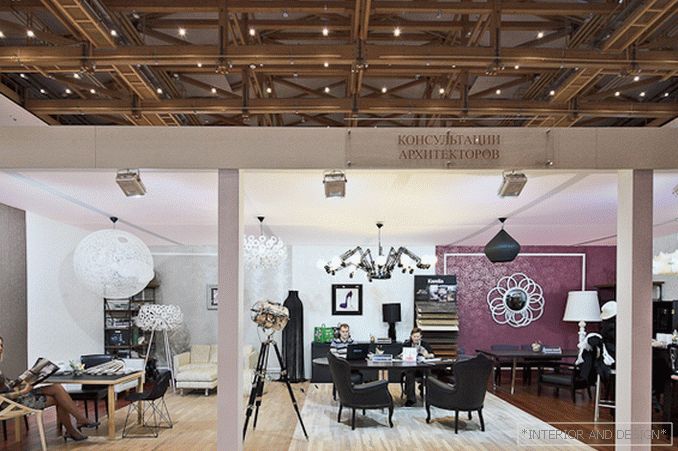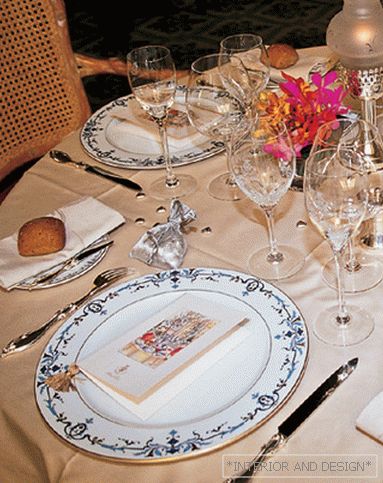Architect Rem Koolhaas (Rem Koolhaas, p. 17.11.1944) is a notebook intellectual, a Pritzker laureate, theorist, curator, a favorite of fashion brands, author of books that must be read for advanced architects and urbanists on all continents.
Related: REM: son about father
Rem Koolhaas is constantly trying to do everything differently than is customary. He designs in a different way, extraordinarily teaches students, he introduced a fashion for research work (AMO Institute). As a designer (OMA bureau), he is interested in urban planning, communications, life variability. Everything he does is happening in the mode of rethinking, or at least has innovative packaging. Not just a step forward, rather a leap to another level.
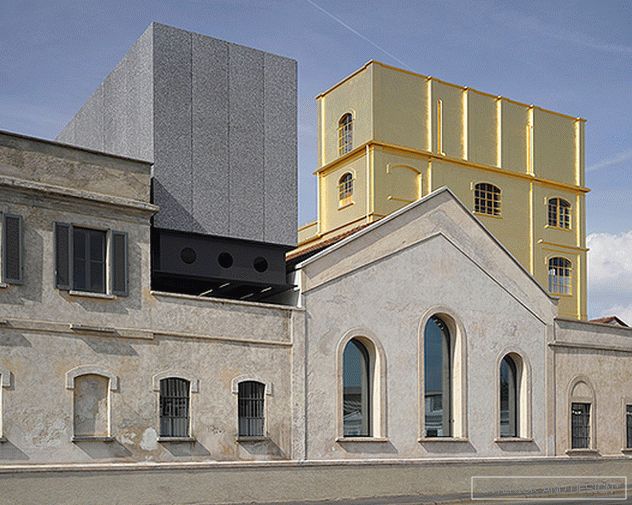 Fondazione Prada in Milan.
Fondazione Prada in Milan. REM COLHAS Dutch architect. Head of OMA and AMO. Glory came to him in the 80s. Parque la Villette in Paris (1982), Rotterdam Art Museum (1992), Guggenheim Museum in Las Vegas (2002), Prada Boutique in New York (2003), Embassy of the Netherlands in Berlin (2003), Seattle Library (2004 ), CCTV in Beijing (2007) - his handiwork. He is the author of books, including Delirious New York: A Retroactive Manifesto for Manhattan (1978) and Mutations (2001).
Rem Koolhaas and Miuccia Prada have been friends for a long time (OMA architects get all the renovation and construction projects of the Fondazione Prada in Venice and Milan), The official collaboration between AMO and Prada began in 2007, when the interdisciplinary clever people of Rem Koolhaas began to work regularly on lookbooks and the design of Prada podium shows.
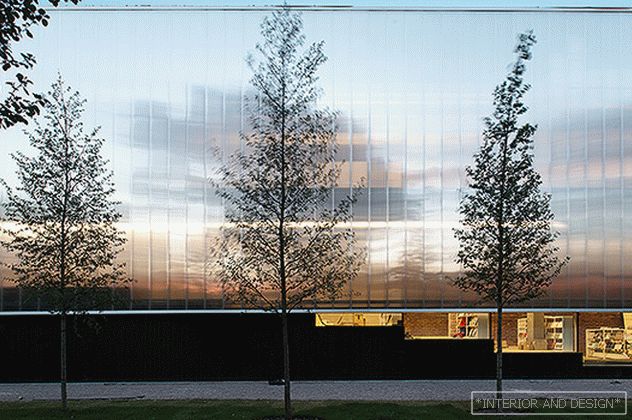 Garage Museum of Contemporary Art, Moscow.
Garage Museum of Contemporary Art, Moscow. The star of world architecture personally opened the new building of the Garage Museum in Gorky Park. With his direct participation, the Strelka Institute for media, architecture and design was created. In 2012, the 1978 translation of his best-selling book of 1978, “New York outside of itself: a retroactive manifesto of Manhattan,” was released. As Kolkhas joked, this is “a work, including about Russia, but a little French, written by the Dutch in English.” For many years Kohlhas participated in the grand reconstruction of the State Hermitage Museum, as a result of long postponements and approvals, the project changed, the collaboration was postponed, but the name of Koolhas remained in Russian ears for a long time. In general, the architect, he is not a stranger to us, but from no less amazing.
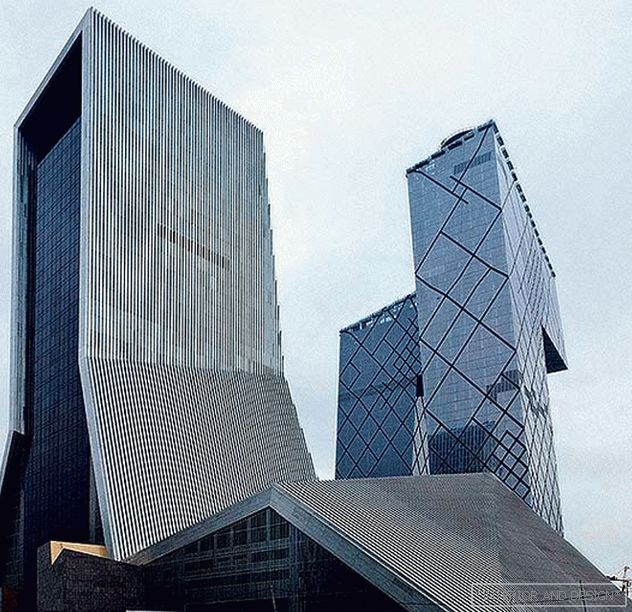 The headquarters of China Central TV in Beijing is CCTV HQ. 2009
The headquarters of China Central TV in Beijing is CCTV HQ. 2009 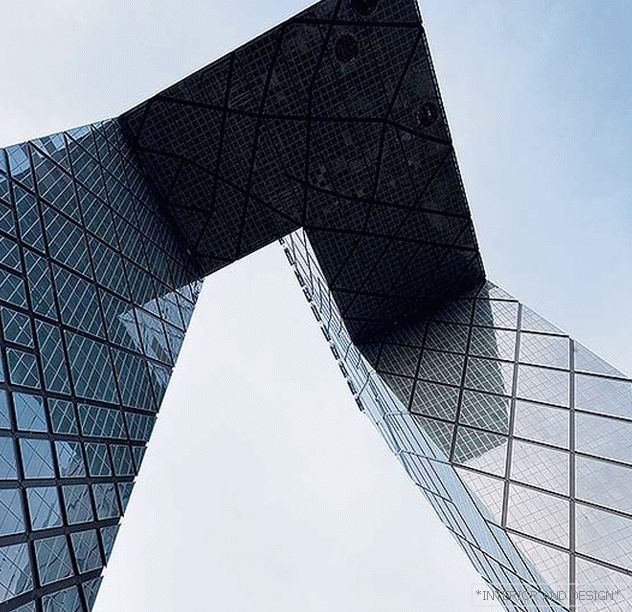 The headquarters of China Central TV in Beijing is CCTV HQ. 2009
The headquarters of China Central TV in Beijing is CCTV HQ. 2009 The Dutchman Kolkhas began his career as a journalist: he wrote screenplays and articles for the local newspaper The Hague Post. Once he was sent to an interview with the artist Constant. Koolhaas, struck by the architectural utopia of the Constant New Babylon, decided to abandon his writing career and went to London to study architecture. And then in New York to Oswald Mattias Ungers - to practice. In the mid-1970s, he organized an OMA bureau (“Office of Urban Architecture”), whose main goal is the positioning of architecture in the context of an actual cultural situation. In addition to the office in New York, the main headquarters in Rotterdam appeared. A few years later, Kolkhas admitted that practice without theory was inconclusive, and opened another office - AMO, where, as in a real research institute, he gathered professionals: sociologists, urbanists, mathematicians, designers, etc. social, technological, medial, political and commercial innovations.
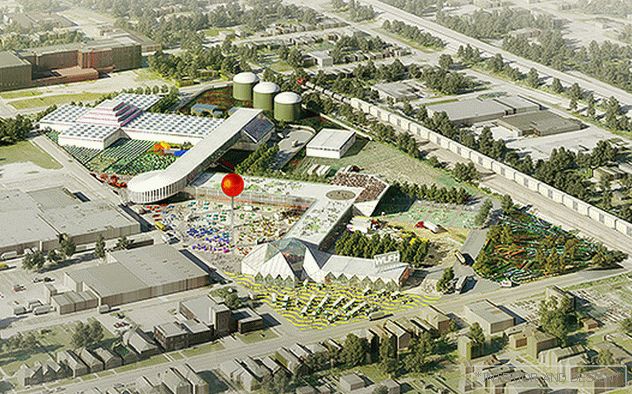 Food Port Complex in Louisville, Kentucky, USA.
Food Port Complex in Louisville, Kentucky, USA. In total, 220 employees from 35 countries of the world work in NII AMO under the leadership of Koolhaas. A rational master takes everything seriously. And sacredly follows the tradition. As Rembrandt in his workshop, Koolhaas is entitled to the “first stroke”. Six architects-partners, who, however, can also offer their own projects, finish writing the ingenious undercuts. Each sentence is carefully studied in AMO. Smart boys explore the background, history, anthropological trends and social objectives, and only then Rem and his team implement the project. For example, the Palazzo Fondaco dei Tedeschi was reworked many times, and before proceeding with its reconstruction, Koolhaas had to study the history of the building for several years.
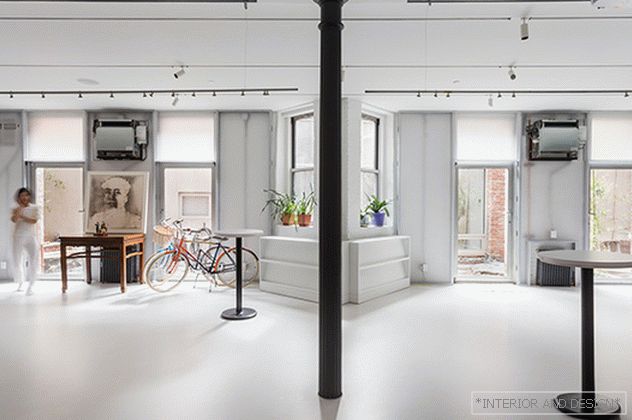 Studio Cai Guo-Qiang’s in New York. Alteration of the school building.
Studio Cai Guo-Qiang’s in New York. Alteration of the school building. Of course, Rem Koolhaas attracted a lot of attention, speaking in 2014 as curator of the XIV Architectural Biennale. Maitre was invited many times; he refused because of the impossibility of subordinating a large number of architects to his research will in two years. And finally he agreed, because he came up with a concept that allows others to move in the right direction, keeping within the time limit. He came up with a three-part story. There are three parts to the Fundamentals project: Absorbing Modernity 1914–2014 (Absorbing Modernity), Elements of Architecture (Architecture Elements), and Monditalia. All three exhibits shed light on the past and the future of architecture. Koolkhas says that after several biennials devoted to actual architecture, the “Basics” modestly turned to the past, of course, with an attempt to explore the present and imagine the future. “Absorbing the Present” - an invitation to all the participating countries of the Biennale to show the 20th century; how the country's architecture adapted the universal design language.
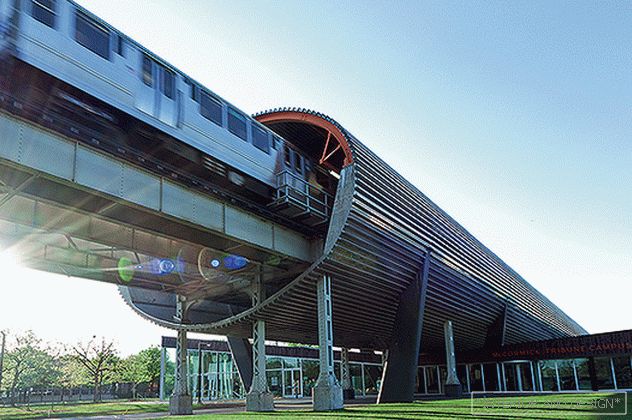 McCormick Tribune Center. IIT campus. Chicago 2003
McCormick Tribune Center. IIT campus. Chicago 2003 “The transition to a global architecture is a more complicated process than is commonly thought, because it involves clashes of cultures, inventions, technologies and something insignificant national. We live in a very flat digital world in which everything is available, but less and less memory remains. We are, in some way, condemned to a "permanent present." That is why it seemed to me that it was important to return to the past to the incredible wealth of what now seems commonplace - to doors, stairs, walls. I want to say how much history our profession contains. How many hidden and unconscious expectations are still concentrated in architecture. I think this is a story that we can hardly guess. ”
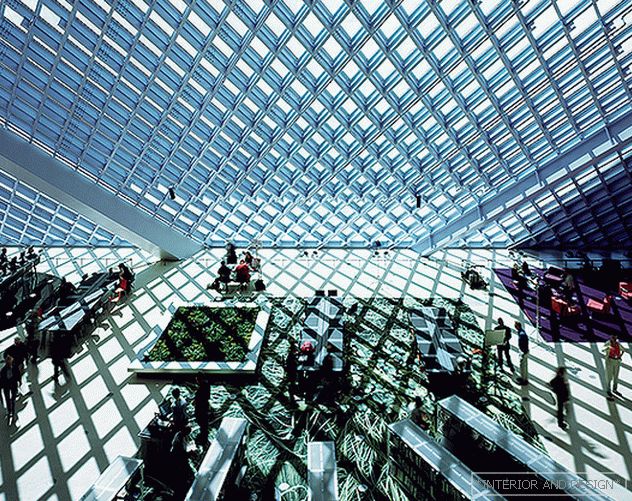 Central Library of Seattle, 2004. Interior.
Central Library of Seattle, 2004. Interior. So why Kohlhas entered the top ten largest architects in the world? For the ability to think in their 70s that the best is still ahead, to read the rapidly changing world and for the ability to adapt to it ideally.

